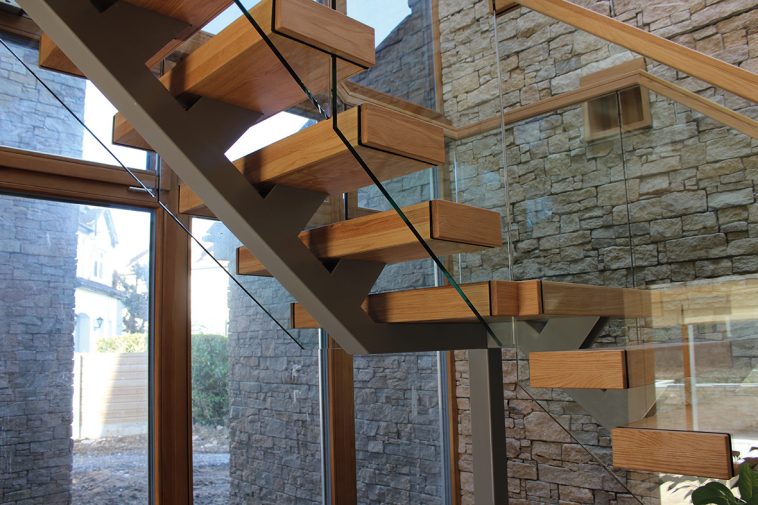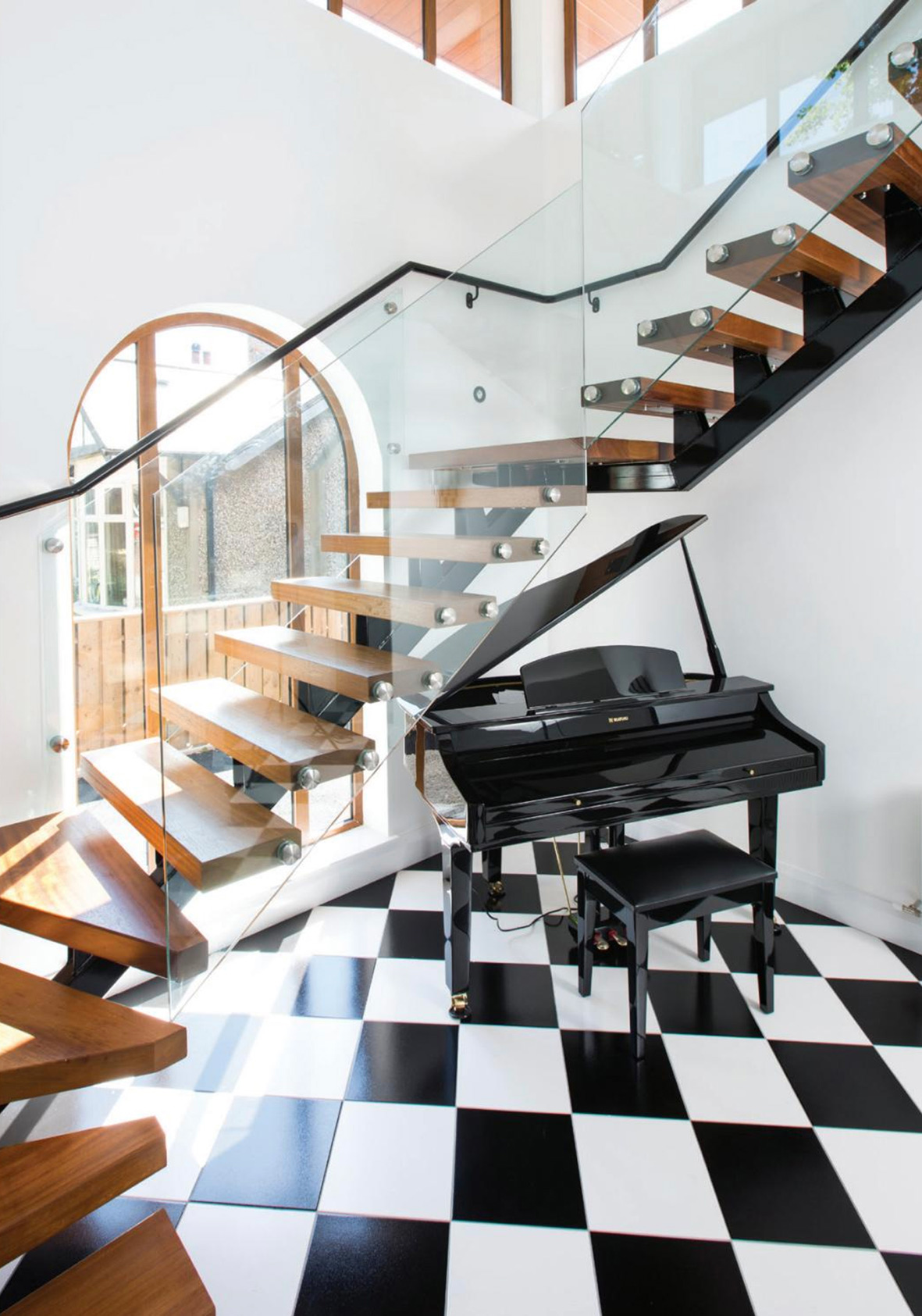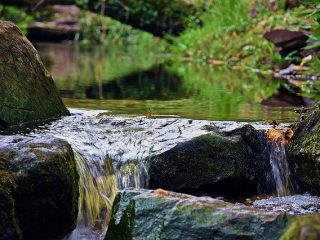As a statement piece of furniture, the staircase can become one of the most expensive items to budget for, writes quantity surveyor Keith Kelliher.
In many of the previous articles in this series, I have spoken about the way our grandparents built their homes to be as cost effective as possible. Back in the day, the only reason to have a staircase was to get from one floor to another. This generally resulted in hiding the staircase away from view, sandwiched between two walls. Over the years the staircase has moved from this utilitarian position to the main entrance hallway, taking pride of place and also increasing its cost.
The size, shape, position and layout of staircases, which taken with material choices, will lead to a variety of cost outcomes. The combined effect can result in a finished staircase costing less than €2,000/£1,800 to a piece of bespoke furniture costing in excess of 100,000 euros or pounds.
Structure
There are two cost components to the structure: material selection and the layout or shape.
The most common choice of material has always been timber, with MDF at the lower end, pine in the midrange and up to solid oak, walnut or mahogany at the higher end.
On a simple standard straight flight of stairs, the cost difference between an MDF staircase and a solid staircase would go into the thousands of euros or pounds. A standard MDF staircase structure will cost less than €500/£450 for a straight single flight whereas a hardwood standard structure will cost over three times that.
The selection of which timber material you choose will directly have an impact on the cost of the staircase structure and will also dictate many of the costs that follow.
It is generally the case that the lower down the order of materials you select, the more likely it will be that a carpet or similar finish will dress the structure. This is generally always the case when it comes to MDF and often with pine or deal, but it is not unusual to see a solid pine staircase left exposed with a varnish.
A carpet finish on a standard straight run can be achieved for less than €1,000/£900 including the landing. For the more expensive exposed timber staircases it’s not unusual to have a varnished finish throughout or a mixture of varnish and the addition of a carpet runner to the centre of the stairs.
It is also now relatively common for the top of each step (thread) to be a different material like a walnut or oak and the remainder of the staircase pine or similar material which is painted in a light colour.
Another common option for the structure is concrete which can be precast (fabricated off site and delivered and lifted into position) or cast in situ (on location) where it is formed and poured onsite. The main benefit of a concrete staircase is longevity and the fact that it will not creak or move over time.
A concrete staircase will cost substantially more than timber with costs starting from over €1,500/£1,400 for a straight flight, working up from there depending on the design.
Apart from the cost of the structure itself, a further financial downside to a concrete staircase is the additional cost of each step generally requiring a further element of finishing works. Oftentimes each step is clad in a carpet, timber or tile and the cost of these finishes can work into the thousands depending on material, size and shape of the staircase.
Not as common as timber and concrete, metal staircases are another option. Mostly found in external conditions due to their long-lasting properties in that environment, they are still selected by many who opt for the more commercial or industrial look.
Left exposed, the cost of a metal staircase structure would generally be less than, but closer to concrete than timber.
Probably the most important cost component of the structure is its layout or shape. Placing the staircase between two walls, negates the need to dress the sides and remains the cheapest method of construction.
With more emphasis on maximising space, it is not unusual to now find staircases with half flights and intermediate landings. While this type of design may reduce the staircase’s footprint, it doubles the cost because instead of a single flight structure there are now two with an additional landing. This results in an increase in the number of parts as well as additional labour.
Arguably the most popular design today is to have a staircase structure that is visually exposed on one of both sides, again adding to the cost because these areas need to be finished with a decorative string detail. This will also add additional cost to the staircase in terms of balustrades and handrails.
Without doubt the most expensive type of staircase layout is the curved staircase. The cost of the structure coupled with the material selection can be over 10 times the cost of a straight flight of stairs but obviously this results in a far more impactful design.
Completions
By completions I mean balustrades, handrails and newel posts, all of which will depend on the type of layout you’ve chosen. A staircase built between two walls has no requirement for balustrades or newel posts and will most likely only require a handrail to be installed directly onto the wall, reducing costs.
Depending on the material selected for the handrail this can cost from a few hundred euros or pounds to less than a thousand for a finished hardwood.
A staircase that is connected to a wall on one side but is exposed on the other will require a balustrade, handrail and newels posts (one at the end of each flight).
A staircase exposed on both sides will require this arrangement on both sides and a staircase with half landings will require additional newel posts due to the additional number of flights.
A curved staircase will also need a curved handrail at a cost of multiples of that to a straight handrail, again depending on the material selected.
As before, material selection is all important with options generally including stud partitions, timber, glass and metal.
The construction of a stud partition at the side of the staircase with a handrail or capping at the top was a very common method of finishing a staircase in Ireland throughout the 1970s. The partition could then be finished to match the remainder of the hallway or surrounding landing areas.
Now more common is the selection of timber spindles, handrails and newel posts. Depending on the material, the design, size and number of spindles, costs of completing a staircase in timber can range from less than €1,000/£900 for standard pine to over €5,000/£4,500 for more decorative hardwoods.
In recent years glass balustrades have grown in popularity but this comes at a price. With glass comes the necessity for fixings which are generally stainless steel. For safety reason the glass must be laminated and it’s not unusual for the glass balustrade to cost upwards of €1,000/£900 per metre run of railing. Metalwork although less popular than the other options, is an expensive finish which usually involves high levels of detailing which generally requires site welding and finishing. It can come in a painted standard mild steel up to a high end finish like stainless steel.
Again depending on detail, shape and overall design, it’s likely that metalwork will work out as expensive as glass. It is also regularly found combined with glass, particularly stainless steel. A stainless steel and glass balustrade will be in excess of €1,500/£1,400 per metre run.













